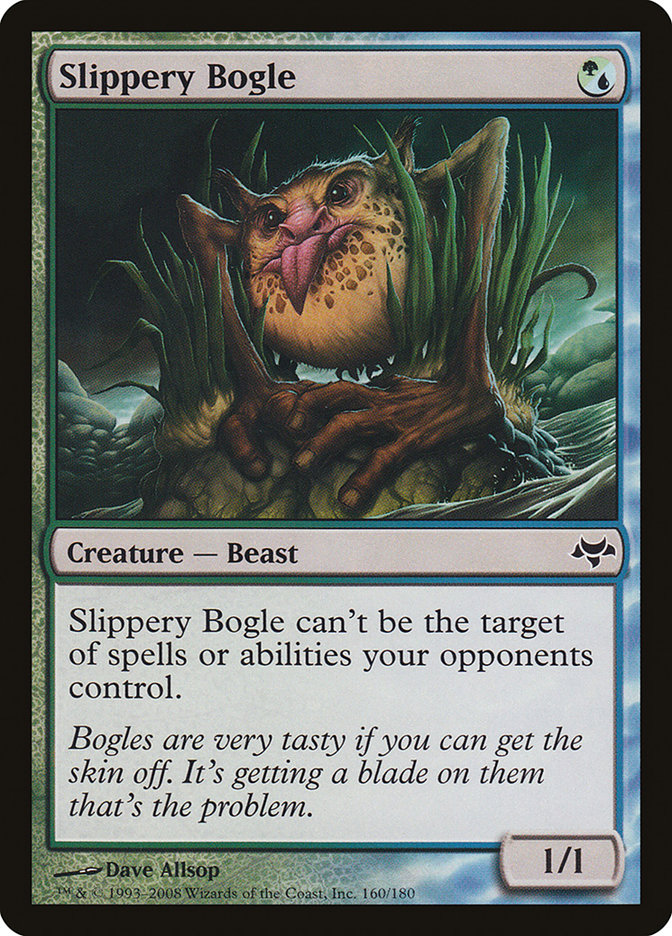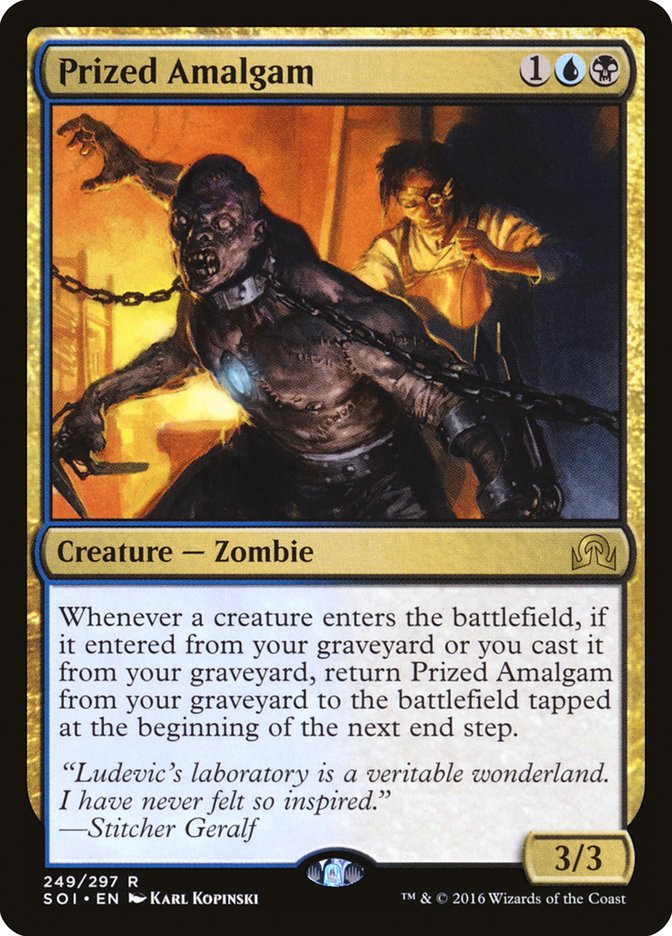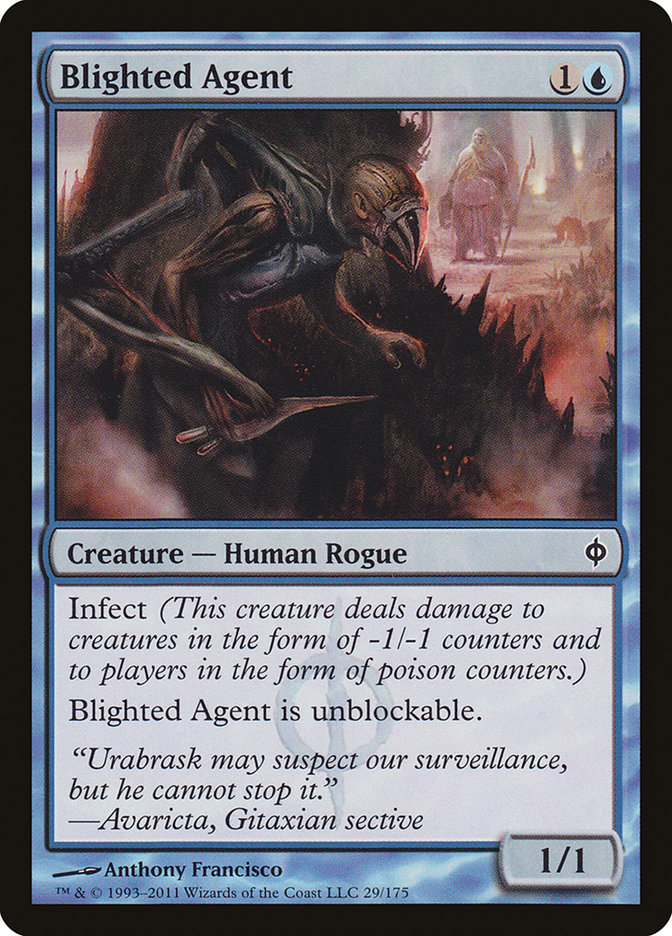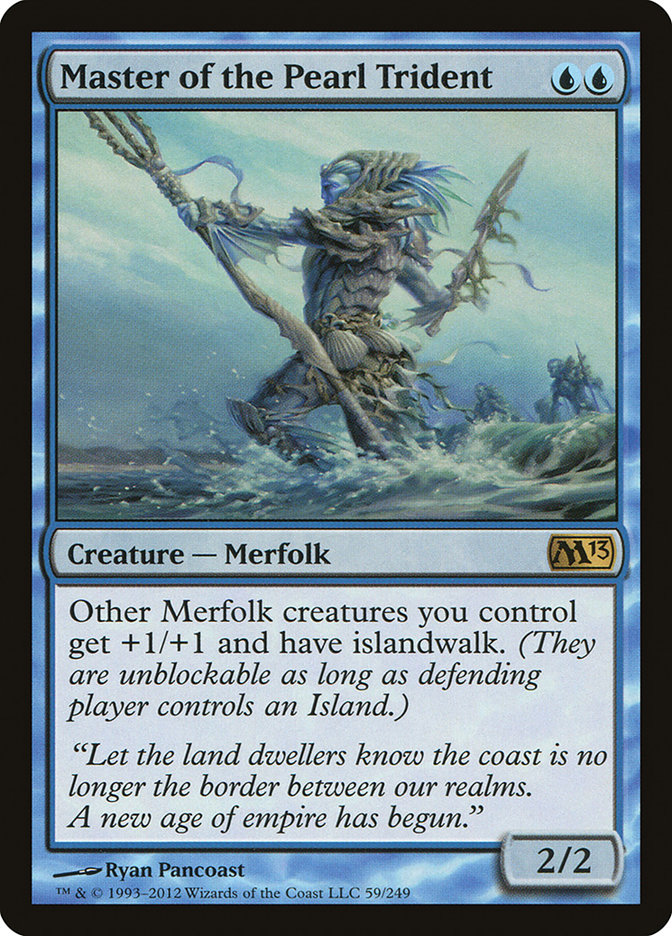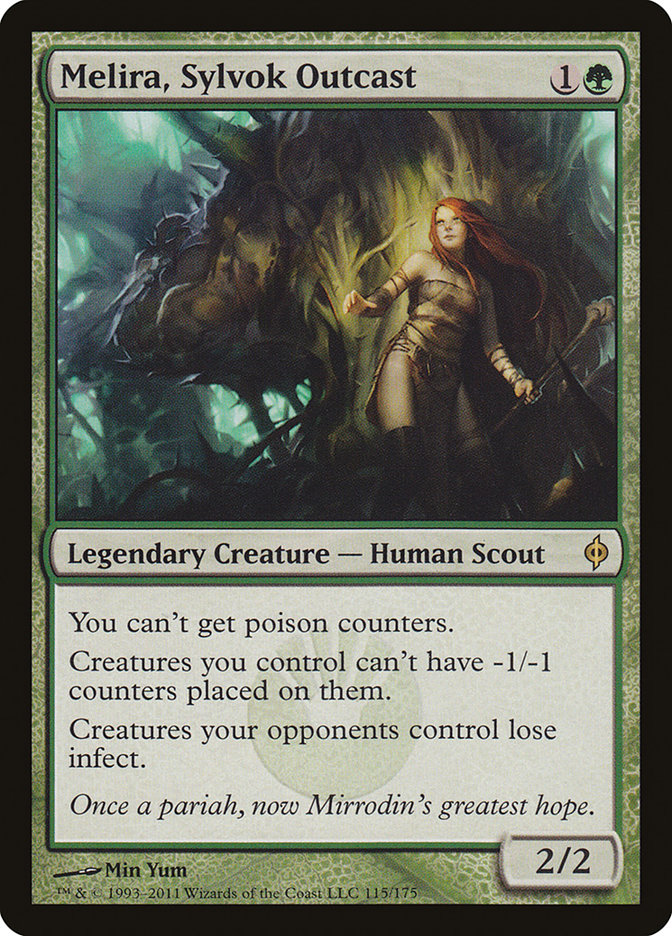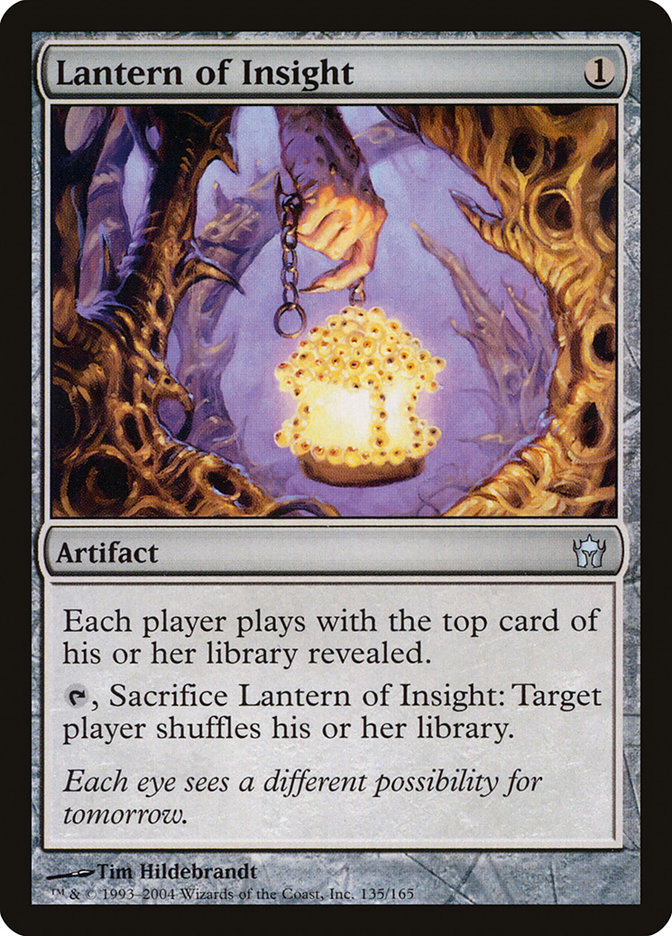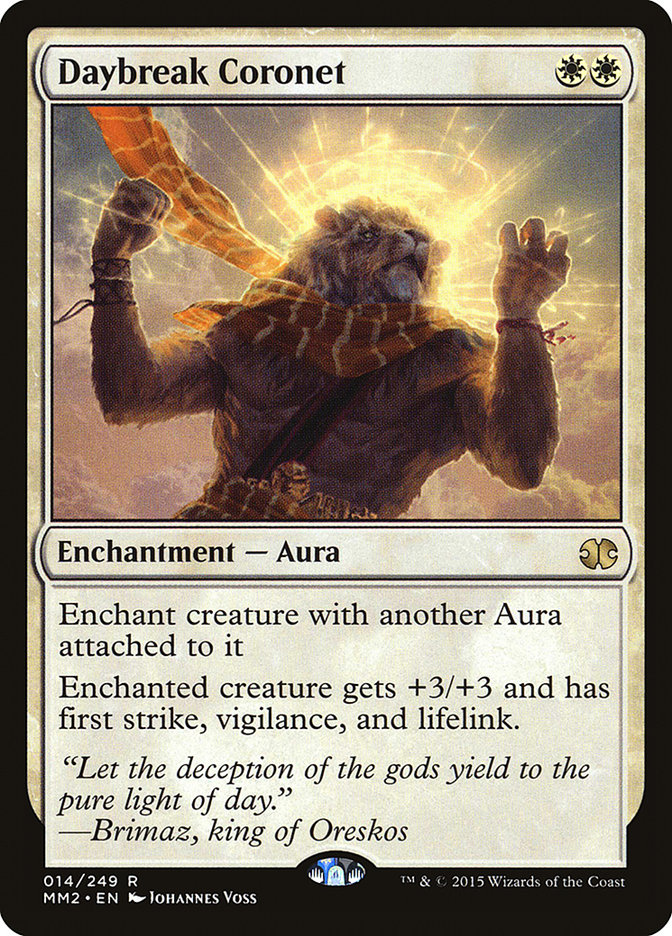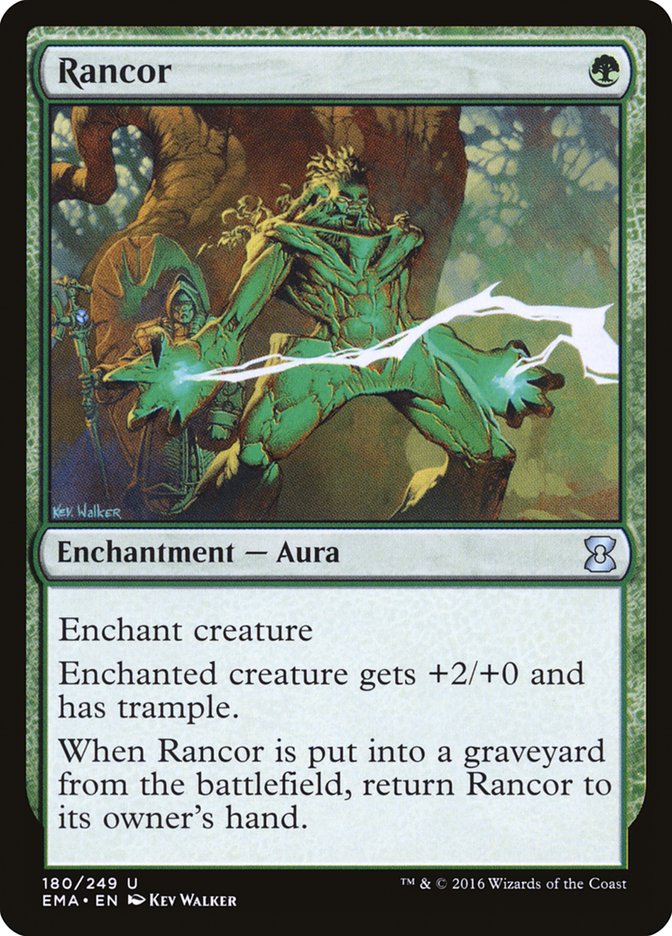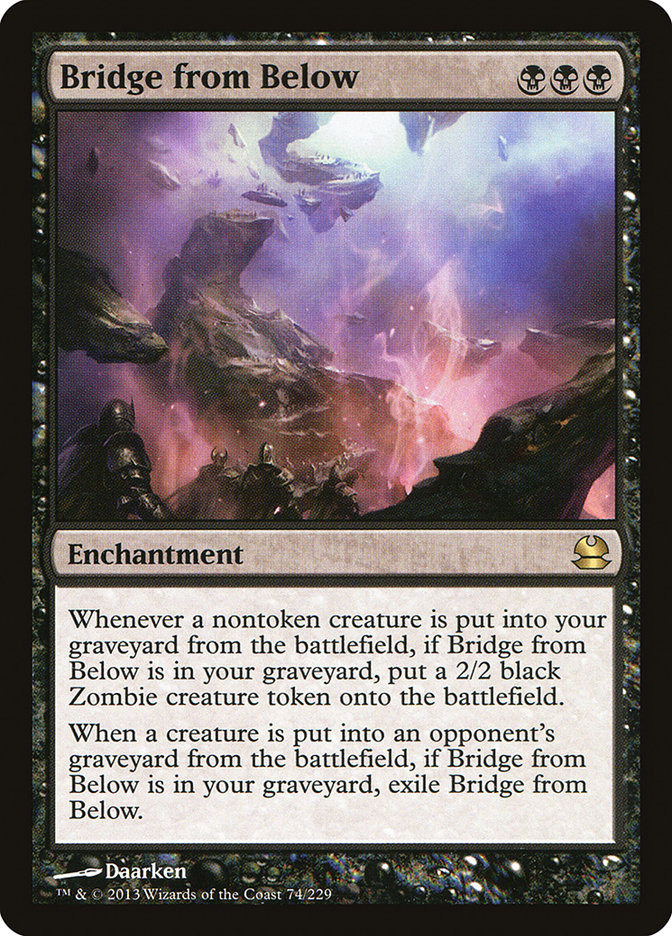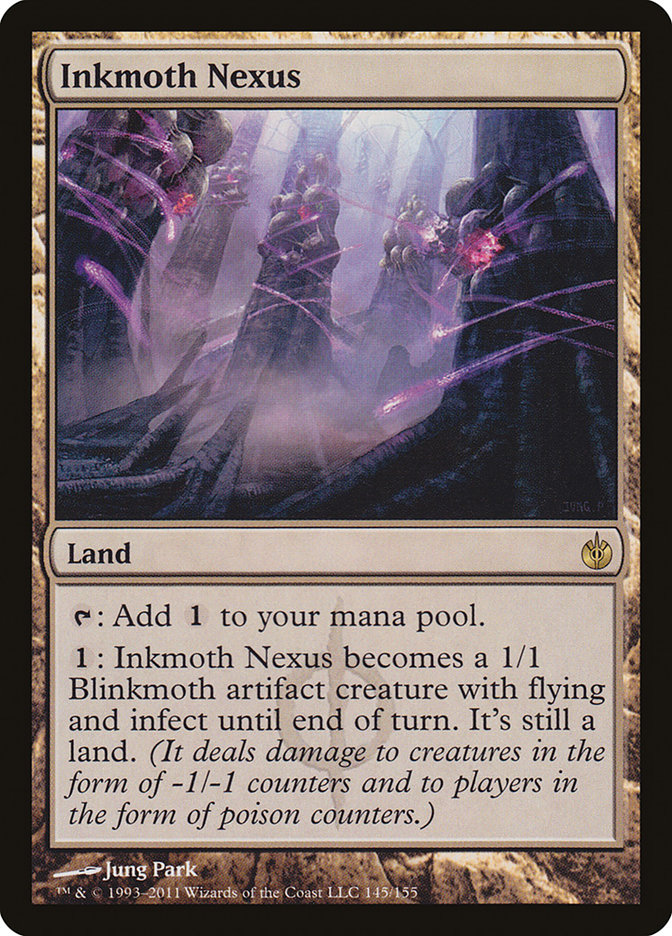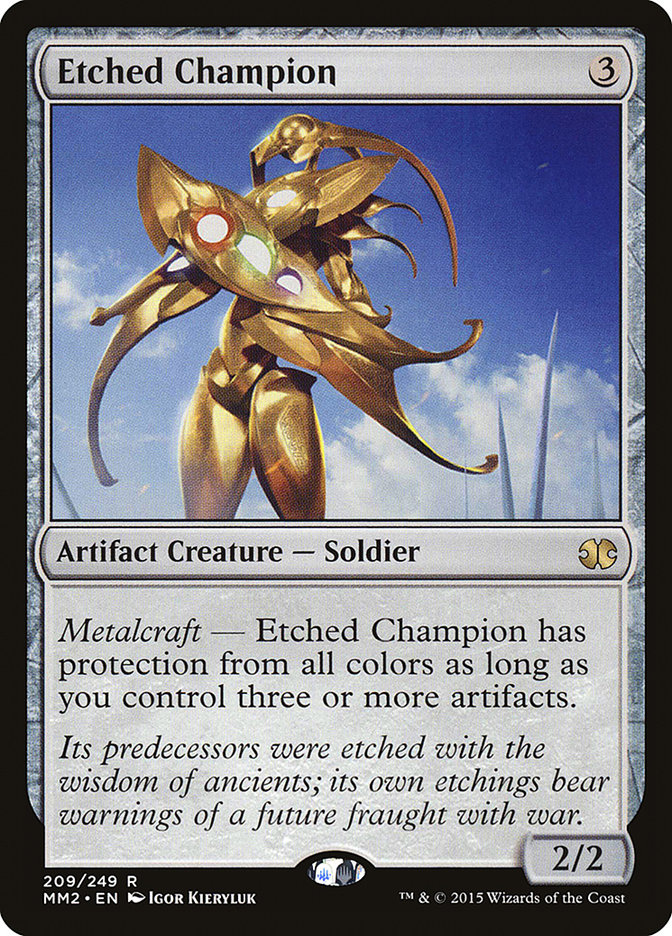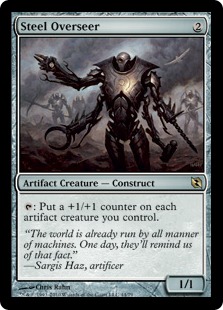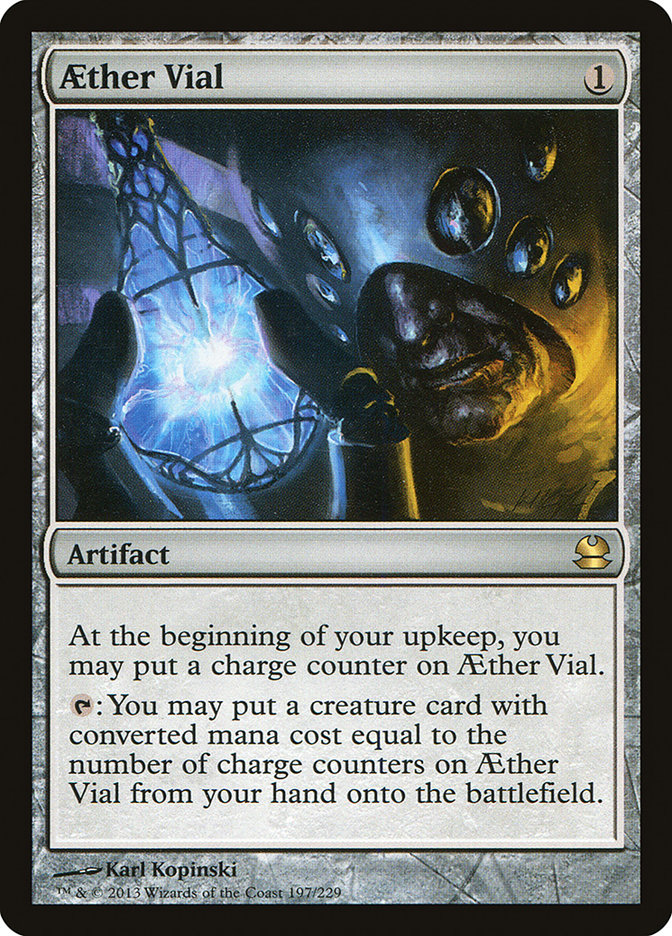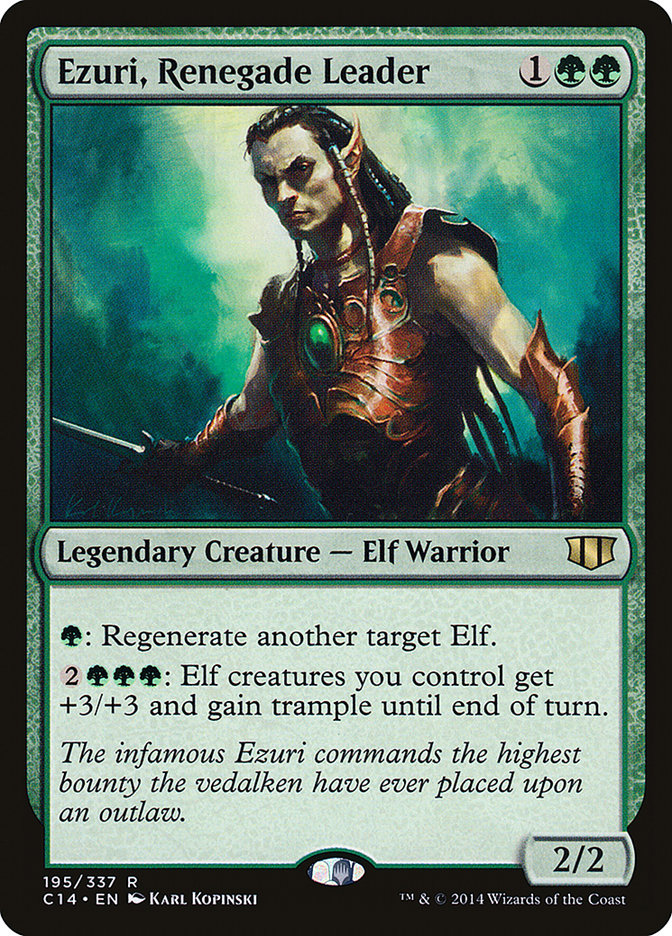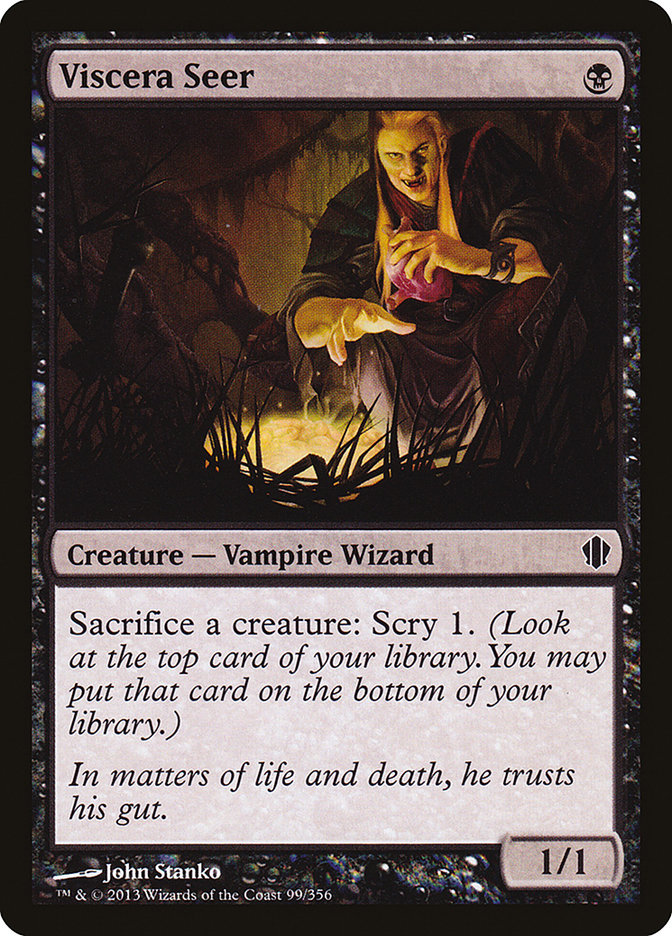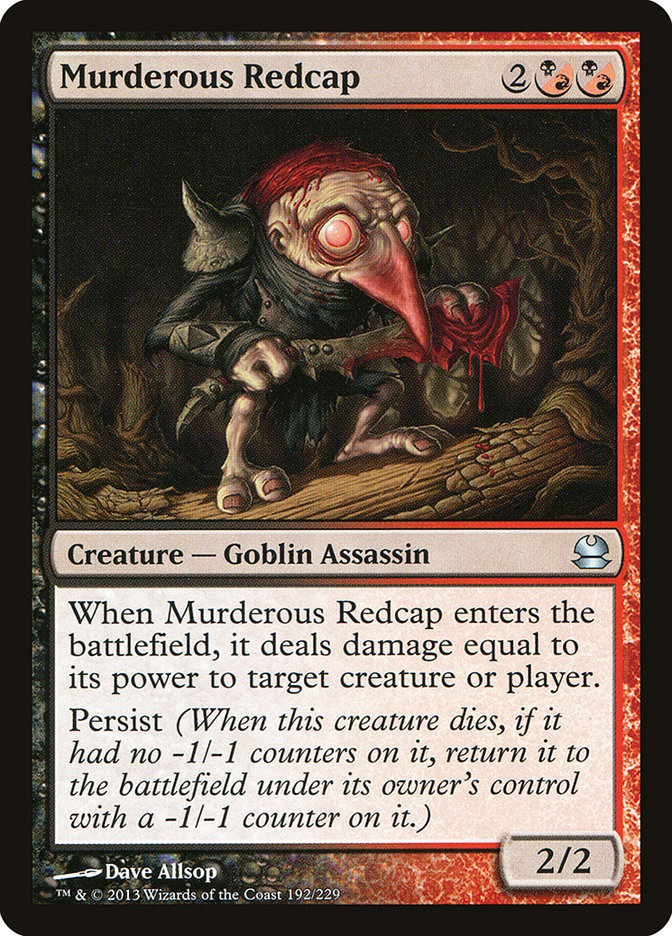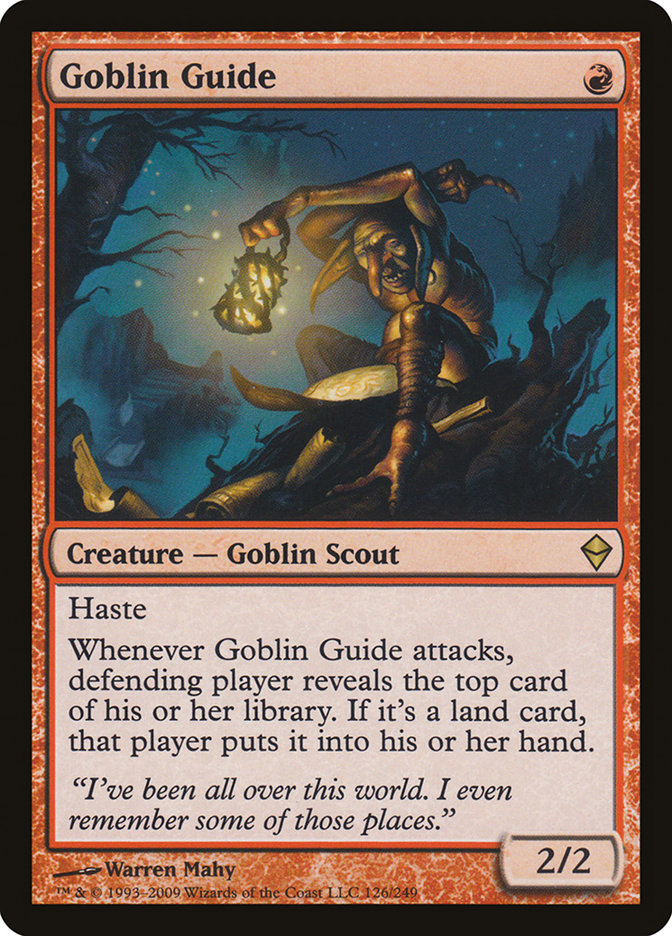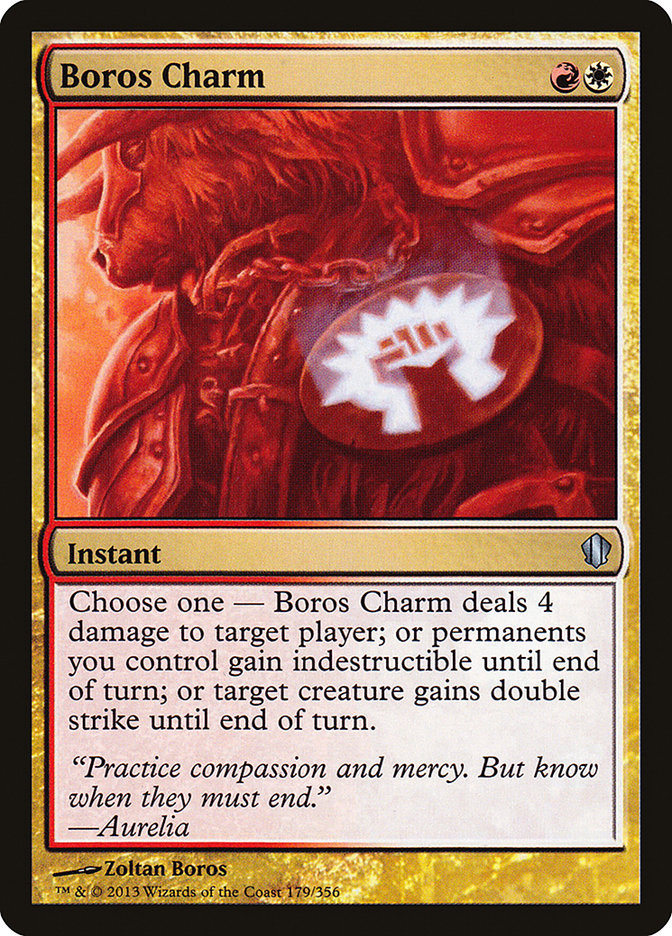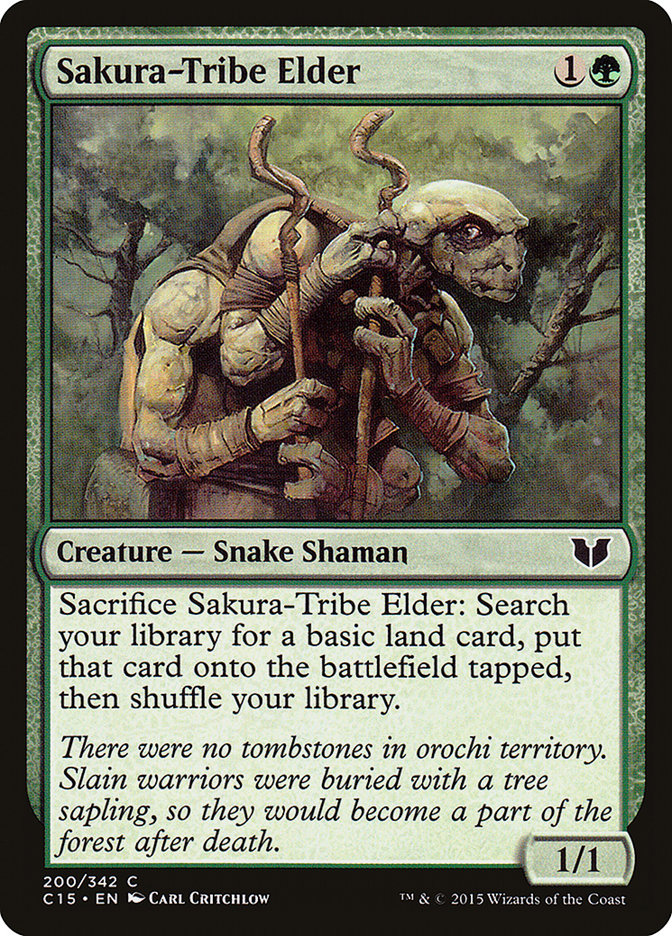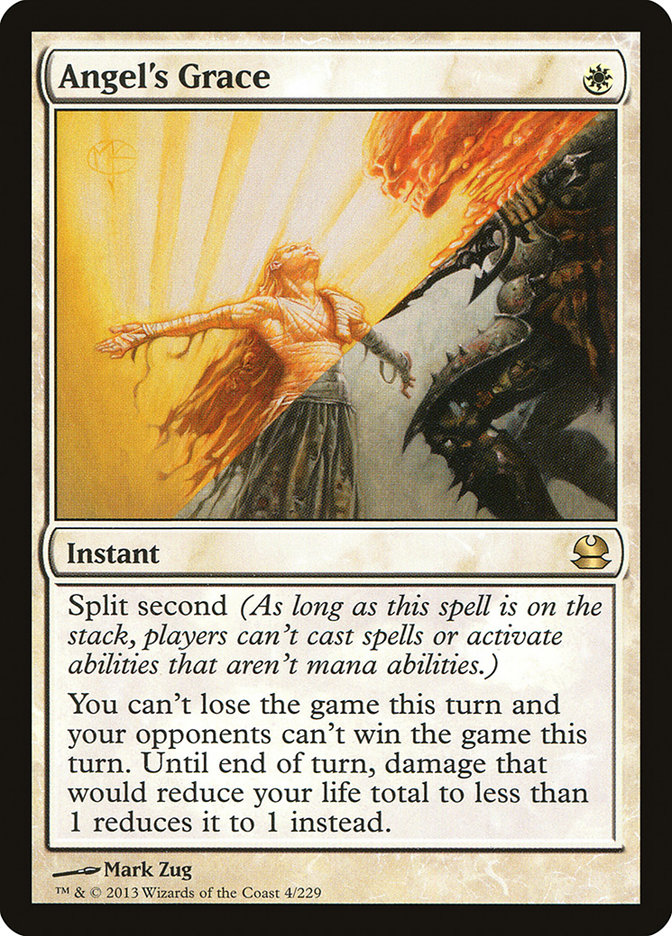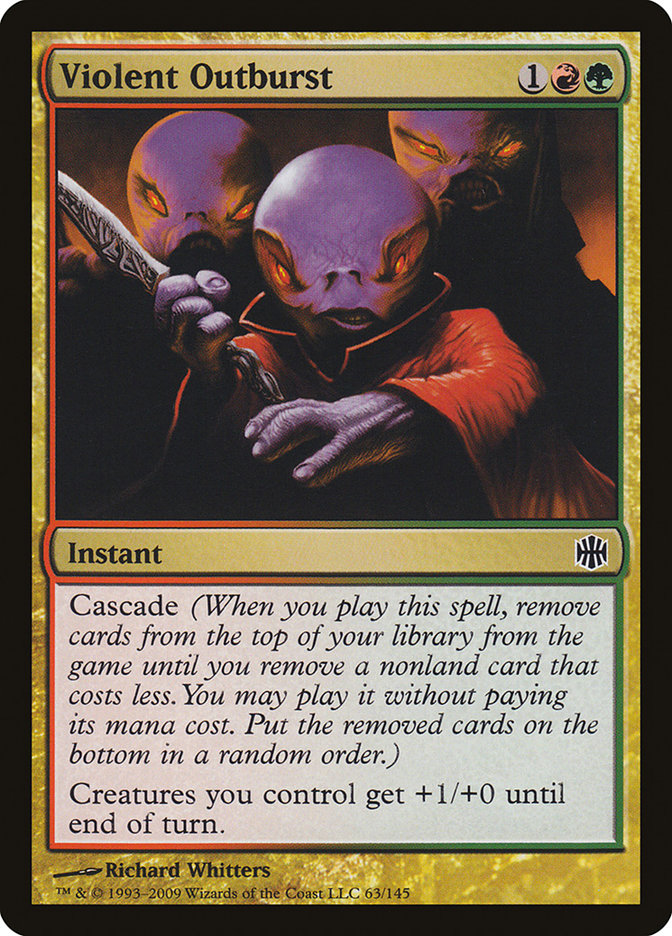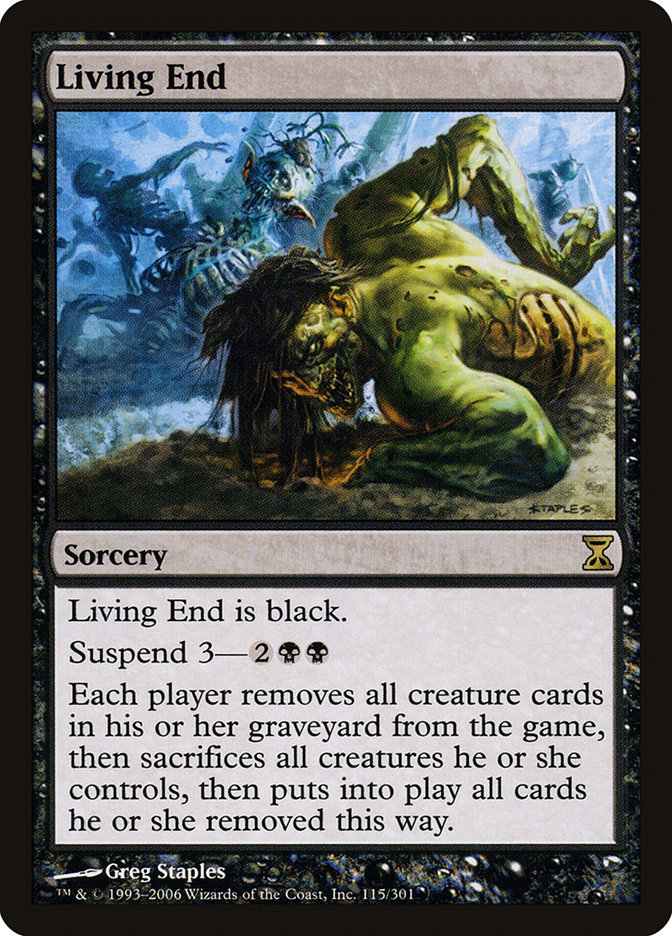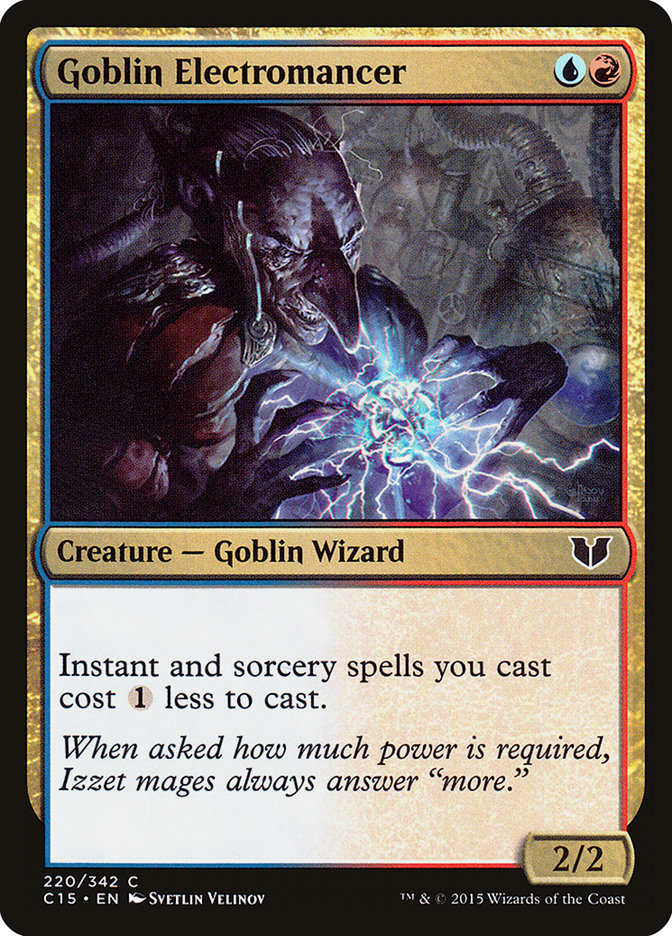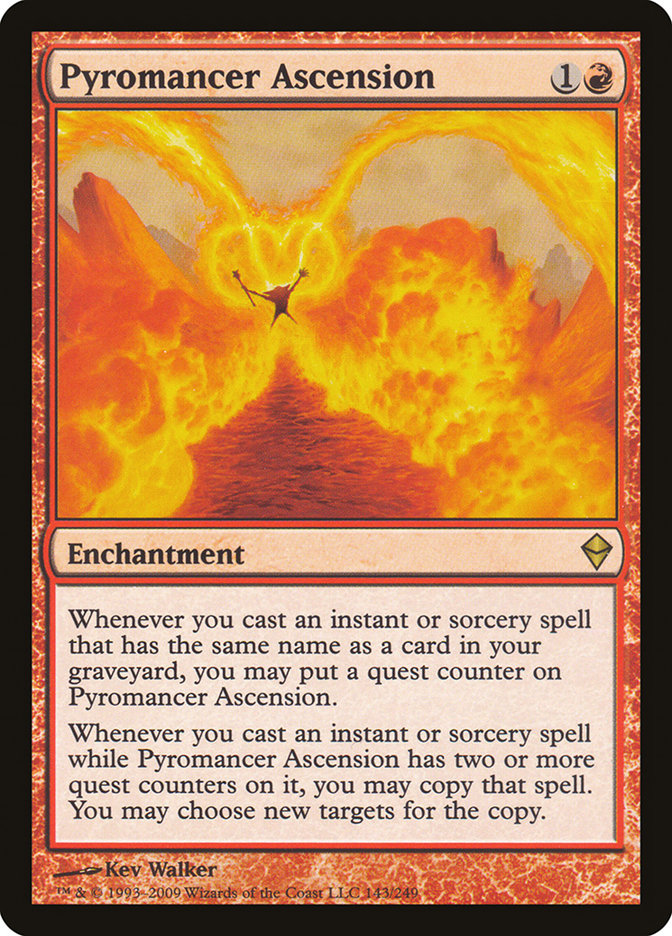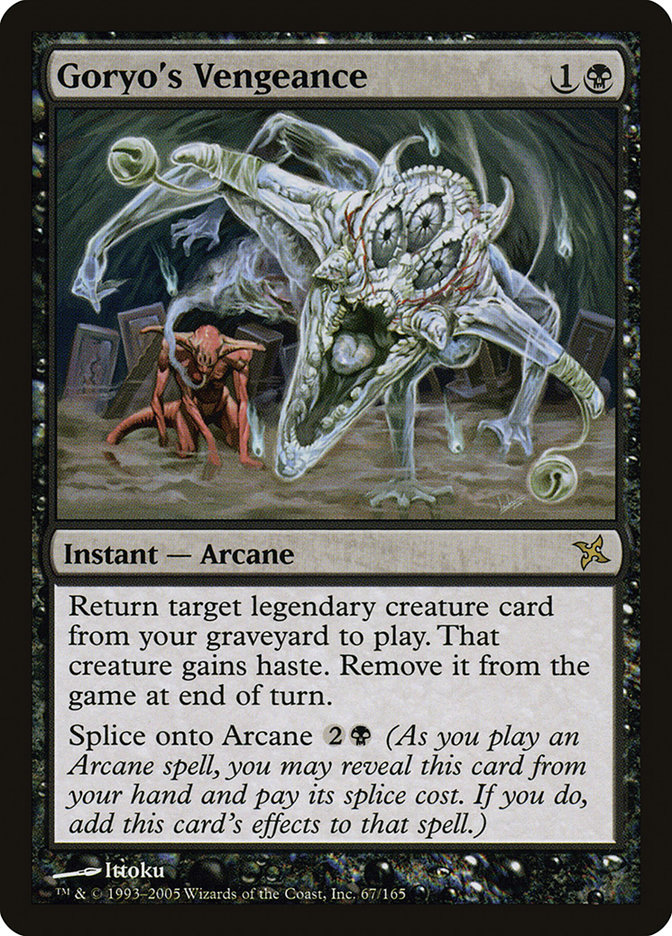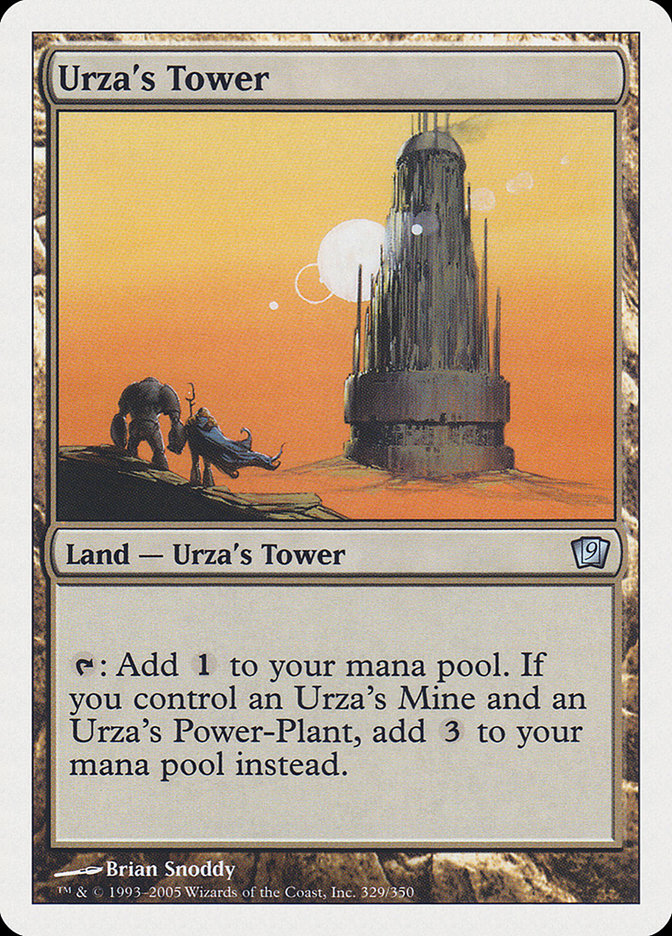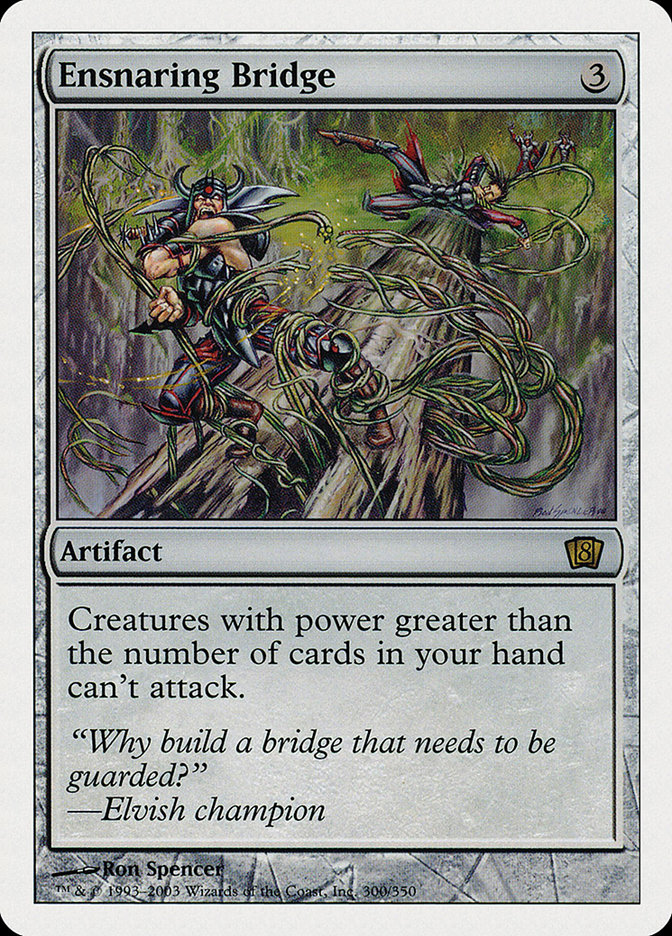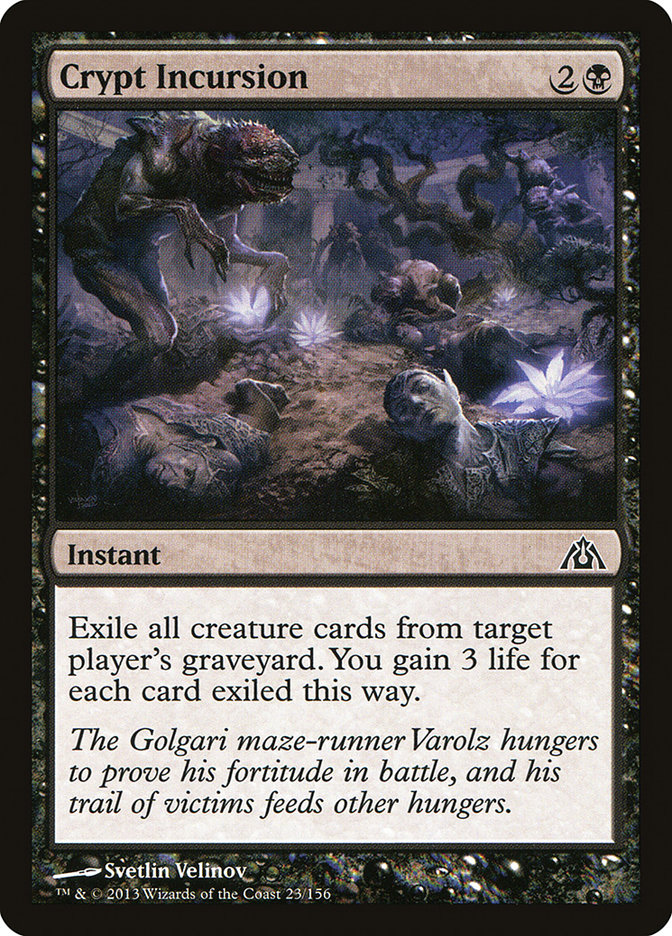I often say that the best approach to Modern is to play the best proactive deck that people aren’t prepared for, but what does that mean in actionable terms? Which decks should you consider? How should you evaluate whether the metagame is right for each of them?
Today, I want to go over the strengths and vulnerabilities of Modern decks I would consider, and how to evaluate when to play them.
Fair Versus Unfair
Basically all proactive decks in Modern try to do something fundamentally unfair, though some are more explicit about it than others. For the purposes of this article, I don’t want to worry too much about whether a deck is fair or unfair. I’m using the term broadly to cover approximately all proactive decks in the format. What I mean by proactive is that it’s a “threat deck,” rather than an “answer deck”–It may play a few ways to interact with the opponent, but for the most part, especially in game 1, you’re just trying to execute your narrative faster or better than the opponent executes theirs. Basically, in Modern, any deck named after a shard or clan (Jund, Abzan, Grixis, Jeskai, or Esper) is probably a reactive/fair/answer deck; Decks named after a single card, mechanic, or tribe (Ad Nauseam, Scapeshift, Dredge, Affinity, Infect, Elves, Merfolk) is a proactive/unfair/threat deck.
Both of these categories are playable and can win tournaments–or can even be the best deck– but personally, I think the best way to get an edge in the format is either mastery of a reactive deck, or optimal metagaming of a proactive deck. This means that unless you already know that you’re going to play Abzan because you always play it, you’ve tuned it for exactly what you expect, and you’re happy and comfortable with the deck, you’ll get your best edge by selecting a well-positioned proactive deck. The logical conclusion from this premise is that if I’m offering advice on what to play, I should suggest a proactive deck, because people who should play reactive decks aren’t out looking for advice on what to play.
So, let’s go over the options:
G/W Hexproof/Dredge – These decks try to attack with creatures that can ignore most removal.
Infect/Death’s Shadow Aggro – These decks use pump spells, especially Become Immense, to try to win in a single attack after going around or through blockers.
Affinity/Merfolk/Elves/Abzan Company – These are linear creature decks that basically try to get more and better creatures onto the battlefield than the opponent. Merfolk, Elves, and Affinity are more similar to each other than they are to Abzan Company.
Burn
Storm
Goryo’s Vengeance
Tron
U/B Mill
These are basically spell decks. They primarily play on the stack rather than on the battlefield. When they do play on the battlefield, they do so in unconventional ways.
Lantern Control – This prison deck looks kind of like a control deck, but it’s basically trying to “win” on turn three by assembling the “lock” of Lantern of Insight, Codex Shredder, and Ensnaring Bridge. Against some decks or some draws, not all of those pieces are needed, and sometimes the game can essentially end on turn two if Lantern of Insight and Codex Shredder are assembled.
That’s nineteen decks, and I’m sure it doesn’t cover everything, but it certainly offers a reasonable body to work with.
Hexproof
This deck is very strong against opposing creature decks because the keywords granted by the various auras, like first strike, reach, trample, and lifelink, matter a lot there. The deck isn’t objectively that fast, though it certainly isn’t slow either, but it wins primarily by playing a threat that the opponent can’t answer with spells or race with creatures.
Broadly speaking, this means that, in terms of its matchup against other unfair decks, it’s going to be naturally strong against the other creature decks and weak against the spell decks, but there are clear exceptions–I’d guess that it’s weak against Infect, as keywords don’t stop Blighted Agent and Infect is faster. I’d also guess that it’s strong against Burn, as Burn doesn’t go over the top enough to beat lifelink, and it has enough creatures to get punished by hexproof’s strength in creature combat.
If a lot of people are playing decks like Storm and Ad Nauseam, this is going to be a bad choice, as every deck like that will require sideboard slots to beat, so you can only beat so many of them. If a lot of people are playing Burn, Merfolk, and Dredge, this is a great choice.
As for the reactive decks, this is going to be good against targeted removal and bad against edicts, so you’d rather play against Jeskai than Jund. For the most part, a lot of this, as with most unfair decks, is going to come down to the opponent’s sideboard.
Sideboard cards to watch out for (don’t play this if these kinds of cards are currently popular):

Dredge
This deck fundamentally wins by invalidating the opponent’s cards. Counterspells, removal, and discard are all generally weak against Dredge. Dredge can go around most blockers and chump block most large attackers. Like Hexproof, it’s not that fast–it generates a game state that most opponents can’t recover from on turn three, like Hexproof; however, like Hexproof, it usually doesn’t win for another turn or two. This means it’s also vulnerable to fast combo decks that can simply ignore what it’s doing.
It plays to the battlefield better than most creature decks when it’s not disrupted, but good draws from linear decks like Hexproof, Affinity, Elves can overpower it (I would guess frequently enough that it’s probably disadvantaged in game 1 against each of those).
Like Hexproof, it’s going to be good against reactive decks that don’t have the exact right tools for it, most of which are generally sideboard cards. It will prey on those while having vulnerability against spell decks that try to win quickly rather than trying to stop it from winning.
Sideboard cards to watch out for:
There are too many that are effective to list here, and they’re mostly relatively interchangeable. Anything that exiles cards in the graveyard or otherwise stops the graveyard from working (like Grafdigger’s Cage) is effective here, and they’re generally not subtle.
Infect
This is among the fastest decks in the format. Nothing can reliably plan to win simply by racing it. Your opponent is obligated to interact with what you’re doing on some level or you’ll win more often than not. The problem is that it’s hard not to find a way to interact. This is basically the opposite of Hexproof and Dredge, which try to narrow the paths of interaction for the opponent. Here, we’re just hoping they can’t interact fast enough.
This is going to be very well-positioned against decks that aren’t trying to interact and are just doing their own thing, like Dredge and Hexproof or Ad Nauseam. This means it’s good against most other unfair decks, which is why it’s such a successful Modern deck. Burn is likely its worse unfair matchup, because they have cheap interaction and a comparable clock.
Among reactive decks, Infect is leaning on its countermeasures like Vines of Vastwood, Spell Pierce, and Apostle’s Blessing, and it has a lot of them. This means removal spells need to be cheap and plentiful or they often won’t work. Having ways to kill creatures that don’t require targeting cuts off some of these countermeasures. In general, relying on Abrupt Decay or the like is going to be too slow, while Lightning Bolt and Path to Exile are very good. Liliana of the Veil (or even Liliana, the Last Hope) is very good.
Sideboard cards to watch out for (These are actually less devastating than sideboard cards against some other decks–whether Infect is a good choice is going to depend more on whether it’s structurally well-positioned against the opposing archetypes than their sideboard cards):

Death’s Shadow Aggro
This is very similar to Infect. It has almost all of the same strengths and weaknesses. The biggest differences are that it’s very bad against Engineered Explosives and worse against Path to Exile and Abrupt Decay because it doesn’t have basic land or ways to grant hexproof. Instead, it’s relying on discard and creatures simply having more toughness to resist removal. This also means it’s better against Lightning Bolt. Basically, this means it would rather play against Jund than Abzan, while Infect would rather play against Abzan than Jund.
Sideboard cards to watch out for:

The last three are usually maindeck, but if people are packing extra in the sideboard, it likely means they want even more than they could fit main in this matchup.
Affinity
This deck is just barely slower than the Become Immense decks and less vulnerable to removal, as they have a variety of threats and Cranial Plating sidesteps creature removal by turning most cards in the deck into must-kill threats, while Etched Champion often just can’t be killed. Steel Overseer means that sometimes the battlefield starts to look similar to an Elves or Merfolk state that suddenly has a lot of huge creatures. Inkmoth Nexus and Blinkmoth Nexus make it very resilient to removal, including sweepers, by increasing its threat density.
Only the fastest decks can regularly plan to race Affinity. Most decks have to answer Affinity’s threats, but one-for-one creature removal will almost never work. You need to generate card advantage in some form to make up for their high threat density–this means you basically need a sweeper of some kind, but almost anything–even Electrickery–will often work. Enough Kolaghan’s Commands and Electrolyzes will also do the trick. Cheap card drawing, like Ancestral Vision or Dark Confidant, backed by a lot of spot removal can also work. Lingering Souls or Spectral Procession are also great options, as each of those tokens is often functionally a whole card against them.
There are very few decks that Affinity is structurally disadvantaged against in game 1. Jeskai and Abzan are likely the worst, as they have cheap interaction that can answer Cranial Plating and appropriate card advantage. I think Affinity is close or favored against most unfair decks.
Sideboard cards to watch out for:

Artifact removal and sweepers, especially efficient sweepers that go to work on one-toughness creatures.
Merfolk
This deck operates on a timeframe closer to Hexproof than to Infect, and it similarly seeks to overpower opposing creature decks.
Structurally, this is going to position itself similarly to Hexproof against other unfair decks in that it can be beaten in a pure race, although it does have some minor interaction in Spreading Seas, Cursecatcher, and Spell Pierce to potentially slow the opponent down. While these interactive elements may not seem like much, I think they actually often tip the unfair matchups in Merfolk’s favor.
Against reactive decks, it’s very much the opposite of Hexproof–any creature removal spell is excellent against Merfolk, as the creatures are expensive enough that they generally cost as much or more than the removal spells and they don’t work very well individually. The more spot removal you have, the more likely you are to have a good matchup against Merfolk for the most part, though, as with Affinity, almost all of their cards are threats and they get some card advantage off Silvergill Adept and have extra threats in their lands from Mutavault. At some point, you’re going to need to generate some card advantage to beat them with removal, but any removal deck should be planning to do that anyway.
Sideboard cards to watch out for:
Basically any sweeper or removal spell–this is another archetype that’s not as concerned with opposing sideboards.
Elves
This deck is very similar to Merfolk. In Merfolk, most of the creatures are relatively interchangeable, while Elves is more like Affinity in that some of its creatures are enablers and others are payoffs, which means that removal can sometimes pick it apart even more effectively and that its draws can be a little less consistent. You don’t want to draw all enablers or all payoffs. Collected Company gives the deck some card advantage that can help come back against removal decks.
Because Elves doesn’t have Merfolk’s interactive elements, it ends up having the other problems that the slower unfair decks have: that it struggles against the faster unfair decks like Infect, Affinity, and Goryo’s Vengeance.
Sideboard cards to watch out for:
Same as Merfolk. Basically anything that kills creatures, but Elves is more vulnerable to the cards that prey on one toughness.
Abzan Company
This is another slower combo deck, but its backup plan of attacking with creatures is very legitimate, and it can sideboard cards like Painful Truths in addition to Collected Company to overwhelm opposing removal decks.
Faster combo can race Abzan Company, but between blockers and Path to Exile, as well as a few interactive creatures, it can often slow them down, and the “insurmountable” board states generated by decks like Dredge and Hexproof don’t actually matter to Abzan Company; it can win or virtually win by gaining infinite life out of nowhere any time. This makes it good against all but the fastest unfair decks.
While it has a good amount of card advantage and relatively resilient creatures to keep the matches competitive against fair decks, I think it’s ultimately disadvantaged against most of them. When it tries to play the card advantage game, they’re usually a bit better set up for it, and its creatures don’t beat Tarmogoyf when they’re on the backup plan. Enough cheap removal will stop this deck from comboing, and most fair decks can win the game at that point.
Sideboard cards to watch out for:

Burn
This is faster than the linear decks and just barely slower than the fast combo decks. It has a great matchup against the linear decks because it can both outrace them and easily pick off some of their important creatures.
This deck is likely most structurally similar to Affinity in that it has a similar clock and similarly cares a lot about the extent to which opposing sideboards are targeting it (though it’s less extreme than Affinity here). As a result, it has very similar matchups in a lot of places and shares Affinity’s weakness against Jeskai, and usually Abzan.
Sideboard cards to watch out for:

Any lifegain spell is rough.
Scapeshift
There are really two different decks here. There are the blue control decks that kill with Scapeshift, which largely play like fair decks. I’m looking at the Ramp/Through the Breach Scapeshift decks that play somewhere between combo and big mana.
The R/G version is slow as linear decks go, but has interaction with Lightning Bolt and Anger of the Gods. That gives it enough interaction that it should be favored against Affinity or Merfolk, but it’s slow enough that it’s likely going to struggle against faster decks like Burn, Death’s Shadow, and Ad Nauseam.
Against fair decks, it plays up its strengths as a big mana deck, which means that it’s structurally very good against decks like Jund and Abzan, though fair decks with counterspells are going to be much better positioned against it, so it may struggle against Nahiri, the Harbinger Jeskai decks.
Sideboard cards to watch out for:

This is another deck that really doesn’t care all that much about opposing sideboards.
Ad Nauseam
This is very much a traditional spell combo deck. It has minimal interaction, basically just Angel’s Grace and Phyrexian Unlife to buy more time, and then it’s just trying to assemble its combo before the opponent wins. This is slower than the fast combo decks and faster than the linear decks, so it’s in the same range as Affinity and Burn.
Creature removal is obviously blank here, as are things like blockers. Discard and counterspells are the best interaction, but occasionally artifact or enchantment removal or land destruction can matter a little, though they’re rarely great.
Structurally, this is going to be disadvantaged against fast combo (it’s truly horrible against Infect and Death’s Shadow), and advantaged against slower linear decks.
Against fair decks, it’s going to depend on how well they can interact on the relevant axes, but they’re going to need either a lot of discard and a fast clock or good counterspells.
Sideboard cards to watch out for:

Discards and counterspells matter here. Note that Pithing Needle isn’t a big problem since it doesn’t stop Laboratory Maniac, but if you only have Lightning Storm, this can end the game on turn 1. You need to be aware of that.
Living End
Living End is a big spell deck with a lot of power, consistency, and a surprising amount of interaction. What it lacks is raw speed, which it tries to make up for with sweepers and land destruction.
The fact that Living End kills all creatures on the battlefield means the deck plays well against opposing creature decks that don’t have Viscera Seer or Arcbound Ravager. A deck like Elves or Hexproof is going to have a lot of trouble here. Similarly, creature-based fair decks like Jund are poorly positioned, as their only real interaction outside of graveyard hate is discard, and Living End can easily cycle to find another cascade spell.
Broadly speaking, against unfair decks, in game 1 Living End is going to struggle against most spell decks, as they’re likely either faster or better at stopping it that it is as stopping them, though I’d imagine its land destruction plan can be effective against big mana decks like Tron and Scapeshift. In exchange it has fabulous matchups against linear creature decks (less true against Affinity).
Against fair decks, it’s really going to depend on how they’re trying to interact and how they’re trying to win the game. Barring hate, Living End will play very well against decks like Abzan and Jund that rely on discard to interact with opposing spells, but it will have a lot more trouble against decks that play counterspells, especially Remand.
Sideboard cards to watch out for:

Watch for any opposing graveyard hate (Grafdigger’s Cage obviously doesn’t count).
Storm
Storm is possibly the archetypal spell deck, though the current iteration leans heavily enough of Goblin Electromancer and Pyromancer Ascension that Abrupt Decay is an excellent card against them.
As for speed, Storm is roughly in the fastest category of decks, as it can often win on turn 3 if the opponent doesn’t interact at all, as it can usually win if it untaps with a Goblin Electromancer or Pyromancer Ascension. In practice, I think almost any interaction slows it down by at least a turn, so I think of it as slightly slower than the fastest decks–I think the race against Burn is close (barring Eidolon of the Great Revel).
Against unfair decks, interaction in game 1 will be minimal, so the game will be a straight race–Storm will beat the slower decks and lose to Goryo’s Vengeance, Infect, Death’s Shadow, and Burn (because of Eidolon of the Great Revel) more often than not.
The matchups against fair decks are generally pretty close. Discard is only effective with a clock, but that’s basically always true, so discard decks are built to establish a clock. Discard is also much more effective when paired with graveyard hate, as otherwise it likely just loses to Past in Flames. Counterspells are good, and Spell Snare specifically is one of the best cards against Storm. Any deck with close to a playset of Spell Snares and Snapcaster Mages should have a pretty good matchup against Storm. Any fair deck that doesn’t have counterspells or graveyard hate is likely disadvantaged against Storm.
Sideboard Cards to watch out for:

Pyromancer Ascension
This deck is very similar to Storm, except instead of Goblin Electromancer, rituals, Past in Flames, and Grapeshot, it plays Lightning Bolt, Lightning Helix, Noxious Revival, Remand, and/or Visions of Beyond. It has fewer dead cards and more interaction, but it has to activate Pyromancer Ascension to win.
Like Storm, it can easily win on turn three if it untaps with Pyromancer Ascension, but it threatens to win on turn 3 much less often without Goblin Electromancer because it has to actually draw a Pyromancer Ascension. This slows it down a bit, but the added burn spells mean that it’s probably better positioned than Storm against Infect (where it can kill the threats) and Death’s Shadow (where it can either kill the threats or just kill the player). Lightning Helix goes a long way against Burn, so it improves in all of Storm’s worst matchups. In exchange, the average turn that it kills is a little later, which means that it’s less likely to beat decks like Ad Nauseam, where Lightning Bolt doesn’t do anything until it wins the game (and even then, Angel’s Grace is very good here).
Against fair decks, reliance on Pyromancer Ascension can be a liability. While turning off removal spells by not playing Goblin Electromancer helps, losing Past in Flames as a backup plan means that Thoughtseize will be much more effective if it can catch a Pyromancer Ascension. Similarly, enchantment removal can be a problem, and counterspells only have to counter Pyromancer Ascension.
Sideboard cards to watch out for:

Jeskai Ascendancy
This is similar to Pyromancer Ascension in that it requires resolving a specific enchantment to win. It has a lot of structural similarities and similar cards. If any of its matchups differ from above, I’m not sure how, and I think the need to use creatures as well as the fact that Jeskai Ascendancy is harder to cast mean that it’s just a worse deck.
If anyone has thoughts on why this isn’t true, I’m interested in them, but I think this is more or less same as above but worse across the board–depending on how reliant it is on Fatestitcher, it may not care as much about graveyard hate. I suppose that’s its biggest advantage.
Goryo’s Vengeance
While this deck is known for the fact that it can be incredibly fast (I think this is the Modern deck that’s most likely to win a game on turn 2 in practice), I think consistency issues mean that it’s likely slower on average than Infect, but I’m not completely sure about that.
This is Modern’s Reanimator deck, and regardless of whether it’s faster than Infect, it’s definitely solidly in the “fast combo” space. This means it will have a good matchup against most unfair decks, as it’s happy to race them. Burn is an exception, as the fast clock makes Griselbrand worse and the Skullcrack effects are devastating (even more than the Nourishing Shoals, in my experience).
This deck also has a lot of strengths against fair decks. Faithless Looting offers a lot of redraws against discard, and a topdecked Goryo’s Vengeance will often win the game on the spot. The fact that the deck can win at instant speed means the deck is very good at slowing down and playing a long game against counterspells, as the opponent never has an opportunity to tap out, so it’s hard for them to establish a clock or dictate the pace of the game.
This is a fantastic game 1 deck across the board (except against the fastest unfair decks), but it has real vulnerabilities to sideboards as well as some consistency issues. Through the Breach offers very real counterplay to graveyard hate, but when this has to become a Through the Breach deck, it loses a lot of speed, power, and consistency.
Sideboard cards to watch out for:

Graveyard hate here is very potent.
Tron
While the Eye of Ugin ban hurt Tron, it’s still very capable of most of the best things it could do before, and this is a deck that frequently generates an insurmountable board on turn 3, and it doesn’t even care about the opponent gaining infinite life.
While a lot of decks will just concede to a turn 3 Karn, an “insurmountable board” is very different than an actual kill. Decks like Infect, Burn, or Ad Nauseam can easily win after Tron has cast its first big spell.
Tron’s purpose is to prey on fair decks, but it has play against some unfair decks. Pyroclasm and Oblivion Stone mean that it plays pretty well against linear creature decks and Relic of Progenitus helps out a lot against graveyard decks. Karn allows it to beat other big mana decks, so it’s probably advantaged against non-blue Scapeshift decks. It has a very bad matchup against all the fastest decks.
Fair decks are almost universally disadvantaged against Tron unless they make a point of targeting it, which requires the right mix of land destruction and hard counterspells.
Sideboard cards to watch out for:

U/B Mill
I haven’t mentioned this deck in going over any other decks because it hasn’t really proven itself yet, but I think it has some potential. While the clock is a little worse than Burn, it’s a little harder to recover from (lifegain doesn’t work against it), and Ensnaring Bridge is outstanding. I think this deck might have been on the edge of breaking out before Nahiri lead to an abundance of Emrakul, the Aeons Torn decks, which this deck has an extremely difficult time with.
Because it’s slower than Burn, it’s really leaning on Ensnaring Bridge or Crypt Incursion to buy time against opposing unfair decks. If neither of those work, it’s likely going to lose the race against other unfair decks. Infect is a nightmare.
Against fair decks, it’s fairly well-positioned. There it can afford to sacrifice a turn of raw speed to remove the opponent’s counterplay, and it’s better than Burn against discard or counterspells because it doesn’t need to resolve as many spells to win. Also, Ensnaring Bridge and Crypt Incursion are very likely to buy time against fair decks. I’d expect a majority of its losses to fair decks to be a direct result of Emrakul, the Aeons Torn.
Sideboard cards to watch out for:

Lantern Control
Evaluating this deck’s clock is very difficult, since even after it happens it can be hard to reconstruct and figure out the turn where the game was functionally over.
As for matchups against other unfair decks, Lantern is generally pretty great here. Unfair decks need to assemble something specific in order to win, or they need to attack, and Lantern Control is great against both of those things. Lantern is fast enough to get under the fastest combo decks because discard, Spellskite, and Ensnaring Bridge go so far to locking them out, and it usually doesn’t take many Codex Shredder effects to pair with Lantern of Insight before the opponent has no chance. Burn and Tron are the best unfair decks against Lantern, and I think both of those are relatively slight favorites.
As for the fair decks, it really depends on how many cards they have that destroy artifacts. Jund is an absolute nightmare for Lantern Control, but most other fair decks are manageable.
Sideboard cards to watch out for:

Artifact destruction is obviously rough here.
So Not Fair
Those are the linear decks that I’d consider or recommend for anyone who isn’t an expert with a particular fair deck. With so many decks in Modern, choosing the right linear deck is never easy; even if you knew the exact decks that were going to be played in the tournament, it’s still a difficult puzzle to work through, but this should help identify where an option will or will not make sense, and it can be especially helpful if you’re targeting a smaller local metagame.
As for the analysis, note that for the most part, I’m looking at game 1 only, and that sideboarding can often swing a matchup but that any deck only has room in the sideboard to swing so many matchups. In some ways, what I’m really evaluating is how much burden there is on constructing a winning sideboard. Also, while I have a lot of experience playing Modern and I’ve played most of these decks, I could easily have missed or forgotten something, so parts of my analysis could be wrong (though I tried to only express confidence in statements I was confident in), but feel free to trust your experience over my theorizing. I’d be interested to hear where people think I may have misevaluated or overlooked something.


